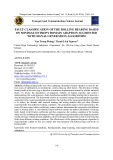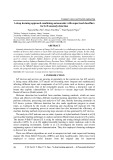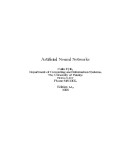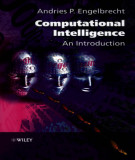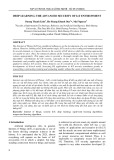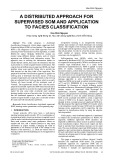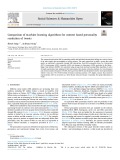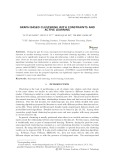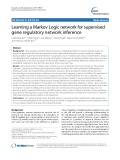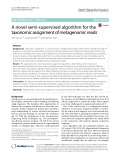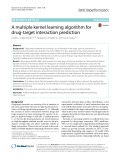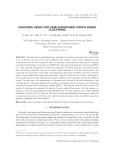
Supervised learning algorithms
-
Rolling bearing faults have been capturing substantial research attention as they are the root causes of malfunctions in mechatronics systems than any other factors. The detection of rolling bearing faults in the early stage is therefore a mandatory requirement demanded by reliable industrial plants.
 15p
15p  vithomson
vithomson
 02-07-2024
02-07-2024
 1
1
 0
0
 Download
Download
-
A deep learning approach combining autoencoder with supervised classifiers for IoT anomaly detection
Anomaly detection for Internet of things (IoT) networks is a challenging issue due to the huge number of devices that connect to each other and generate huge amounts of data. In this study, we propose a model combining Autoencoder (AE) with classification algorithms to build an endto-end architecture for processing, feature extraction and data classification.
 13p
13p  viambani
viambani
 18-06-2024
18-06-2024
 7
7
 1
1
 Download
Download
-
Lecture Artificial intelligence: Q learning. This lecture provides students with content including: supervised learning; unsupervised learning; reinforcement learning; utilize the Q matrix;... Please refer to the detailed content of the lecture!
 18p
18p  codabach1016
codabach1016
 03-05-2024
03-05-2024
 1
1
 0
0
 Download
Download
-
The article aims to develop a machine-learning algorithm that can predict student’s graduation in the Industrial Engineering course at the Federal University of Amazonas based on their performance data. The methodology makes use of an information package of 364 students with an admission period between 2007 and 2019, considering characteristics that can affect directly or indirectly in the graduation of each one.
 13p
13p  viarnault
viarnault
 25-04-2024
25-04-2024
 1
1
 1
1
 Download
Download
-
This scholarly research paper addresses the crucial and complex challenge of detecting and categorizing Internet of Things (IoT) botnets through the utilization of machine learning algorithms. The study is focused on conducting meticulous analysis and manipulation of IoT botnet data, with a specific emphasis placed on the widely acknowledged IoT23 dataset.
 12p
12p  visystrom
visystrom
 22-11-2023
22-11-2023
 8
8
 5
5
 Download
Download
-
This course is an introduction to the subject of Artificial Neural Networks and Genetic Algorithms, two very new subjects forming part of Distributed Artificial Intelligence. As you leaf through these notes you will notice that they are full of mathematical equations. The reason is simple: these subjects are inherently mathematical. However the course and assessments are such that it will be possible for you to pass if you do not touch the equations. However if you wish to gain a good pass you must attempt to master the equations.
 136p
136p  haojiubujain08
haojiubujain08
 01-11-2023
01-11-2023
 5
5
 2
2
 Download
Download
-
Why this book on computational intelligence? Need arose from a graduate course, where students do not have a deep background of artificial intelligence and mathematics. Therefore the introductory nature, both in terms of the CI paradigms and mathematical depth. While the material is introductory in nature, it does not shy away from details, and does present the mathematical foundations to the interested reader.
 311p
311p  haojiubujain07
haojiubujain07
 20-09-2023
20-09-2023
 6
6
 3
3
 Download
Download
-
This paper aims to provide a thorough insight into Deep learning (DL) algorithms’ contributions for IoT security, especially on the ways they operate, the benefits and drawbacks and possible applications in IoT security systems as well as illustrates how they are applied to enhance IoT security.
 9p
9p  vifriedrich
vifriedrich
 06-09-2023
06-09-2023
 5
5
 3
3
 Download
Download
-
This study proposes a distributed classification framework, which adapts supervised SelfOrganizing Maps (SOM) as base learners. The supervised SOM is the integration of the SOM algorithm with the Learning Vector Quantization (LVQ) algorithm, so called SOM-LVQ model. Multiple SOM-LVQ models are created using different feature subsets, each of which represents one different local information source.
 6p
6p  viannee
viannee
 02-08-2023
02-08-2023
 6
6
 4
4
 Download
Download
-
In this paper, multiple classification algorithms including support vector machine (SVM), random forest (RF), decision tree (DT), K-nearest neighbours (KNN), logistic regression, Gaussian, Bernoulli, multinomial Naïve Bayes, and linear discriminant analysis were executed on the seismic attributes for lithofacies prediction.
 9p
9p  vibentley
vibentley
 08-09-2022
08-09-2022
 14
14
 4
4
 Download
Download
-
Transcriptional enhancers regulate spatio-temporal gene expression. While genomic assays can identify putative enhancers en masse, assigning target genes is a complex challenge. We devised a machine learning approach, McEnhancer, which links target genes to putative enhancers via a semi-supervised learning algorithm that predicts gene expression patterns based on enriched sequence features.
 21p
21p  vialfrednobel
vialfrednobel
 29-01-2022
29-01-2022
 12
12
 0
0
 Download
Download
-
This study endeavored to build a system that could predict an individual’s personality through SM conversation. Four BIG5 personality items (i.e. Extraversion (EXT), Consciousness (CON), Agreeable (AGR) and Openness to Experiences (OPN) equivalent to the Myers–Briggs Type Indicator (MBTI)) were predicted using six supervised machine learning (SML) algorithms.
 10p
10p  lazzaro
lazzaro
 30-12-2021
30-12-2021
 11
11
 0
0
 Download
Download
-
The small number of samples and the curse of dimensionality hamper the better application of deep learning techniques for disease classification. Additionally, the performance of clustering-based feature selection algorithms is still far from being satisfactory due to their limitation in using unsupervised learning methods.
 17p
17p  vijeeni2711
vijeeni2711
 30-06-2021
30-06-2021
 12
12
 1
1
 Download
Download
-
In this paper, we propose a semisupervised graph based clustering algorithm that tries to use seeds and constraints in the clustering process, called MCSSGC. Moreover, we also introduce a simple but efficient active learning method to collect the constraints that can boost the performance of MCSSGC, named KMMFFQS. These obtained results show that the proposed algorithm can significantly improve the clustering process compared to some recent algorithms.
 19p
19p  nguaconbaynhay11
nguaconbaynhay11
 07-04-2021
07-04-2021
 14
14
 1
1
 Download
Download
-
Gene regulatory network inference remains a challenging problem in systems biology despite the numerous approaches that have been proposed. When substantial knowledge on a gene regulatory network is already available, supervised network inference is appropriate.
 14p
14p  viwyoming2711
viwyoming2711
 16-12-2020
16-12-2020
 10
10
 1
1
 Download
Download
-
Taxonomic assignment is a crucial step in a metagenomic project which aims to identify the origin of sequences in an environmental sample. Among the existing methods, since composition-based algorithms are not sufficient for classifying short reads, recent algorithms use only the feature of similarity, or similarity-based combined features.
 12p
12p  vioklahoma2711
vioklahoma2711
 19-11-2020
19-11-2020
 7
7
 1
1
 Download
Download
-
Drug-target networks are receiving a lot of attention in late years, given its relevance for pharmaceutical innovation and drug lead discovery. Different in silico approaches have been proposed for the identification of new drug-target interactions, many of which are based on kernel methods.
 16p
16p  vioklahoma2711
vioklahoma2711
 19-11-2020
19-11-2020
 9
9
 2
2
 Download
Download
-
The Random Forest (RF) algorithm for supervised machine learning is an ensemble learning method widely used in science and many other fields. Its popularity has been increasing, but relatively few studies address the parameter selection process: a critical step in model fitting.
 13p
13p  vioklahoma2711
vioklahoma2711
 19-11-2020
19-11-2020
 11
11
 0
0
 Download
Download
-
High-throughput sequencing data are widely collected and analyzed in the study of complex diseases in quest of improving human health. Well-studied algorithms mostly deal with single data source, and cannot fully utilize the potential of these multi-omics data sources.
 13p
13p  viconnecticut2711
viconnecticut2711
 29-10-2020
29-10-2020
 12
12
 1
1
 Download
Download
-
Though clustering algorithms have long history, nowadays clustering topic still attracts a lot of attention because of the need of efficient data analysis tools in many applications such as social network, electronic commerce, GIS, etc. Recently, semi-supervised clustering, for example, semi-supervised K-Means, semi-supervised DBSCAN, semi-supervised graph-based clustering (SSGC) etc., which uses side information to boost the performance of clustering process, has received a great deal of attention.
 12p
12p  12120609
12120609
 23-03-2020
23-03-2020
 31
31
 2
2
 Download
Download
CHỦ ĐỀ BẠN MUỐN TÌM








